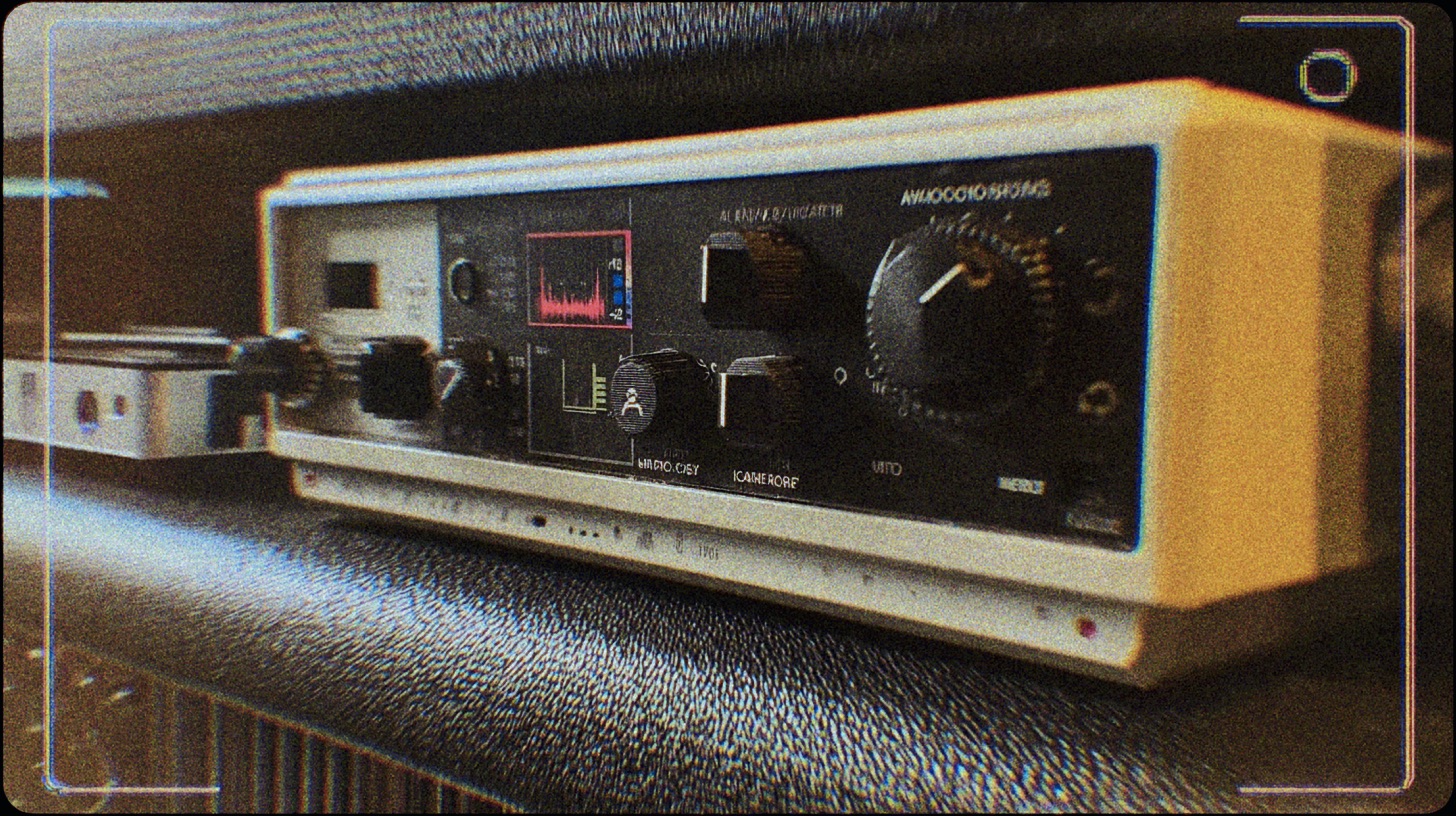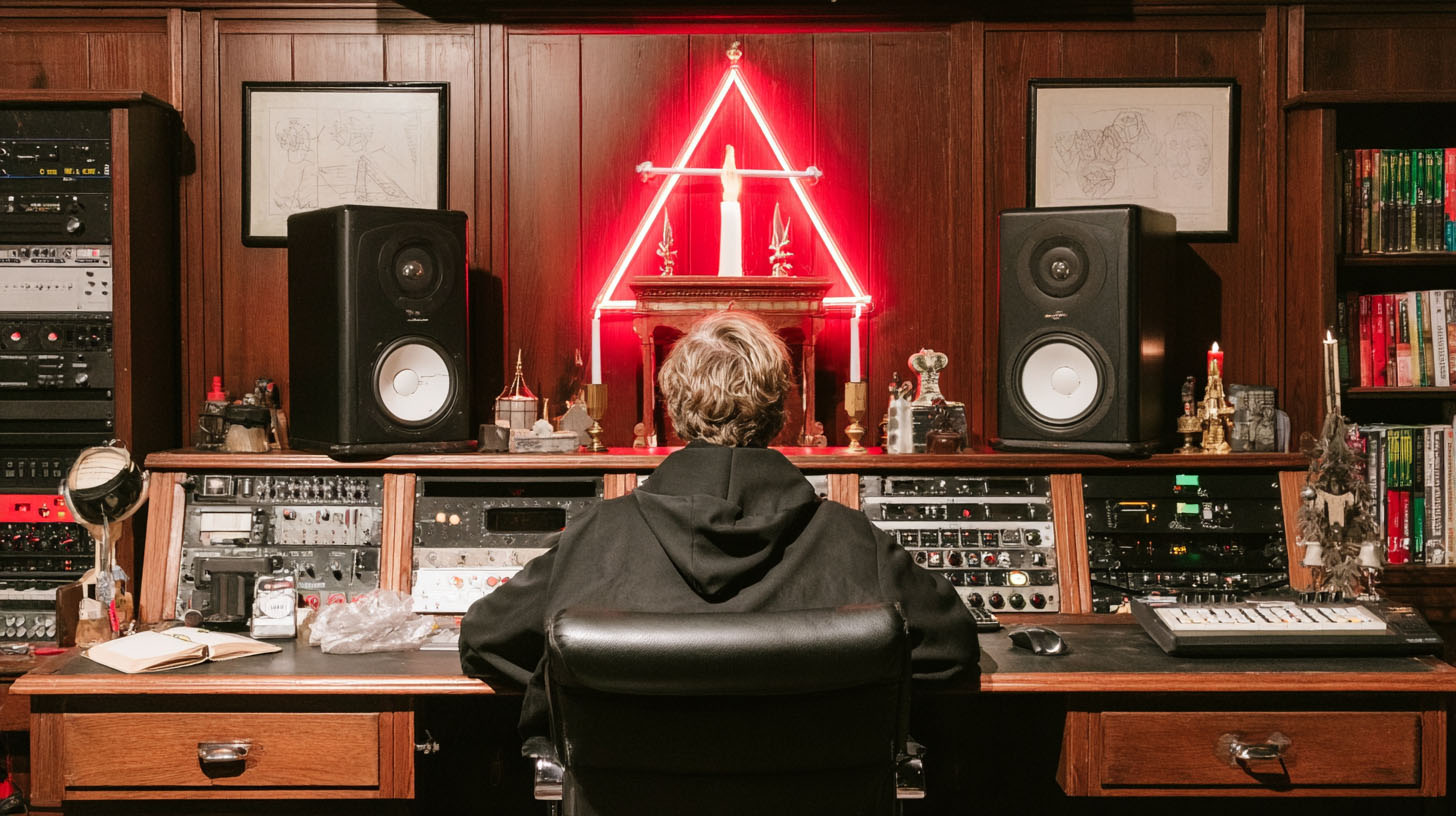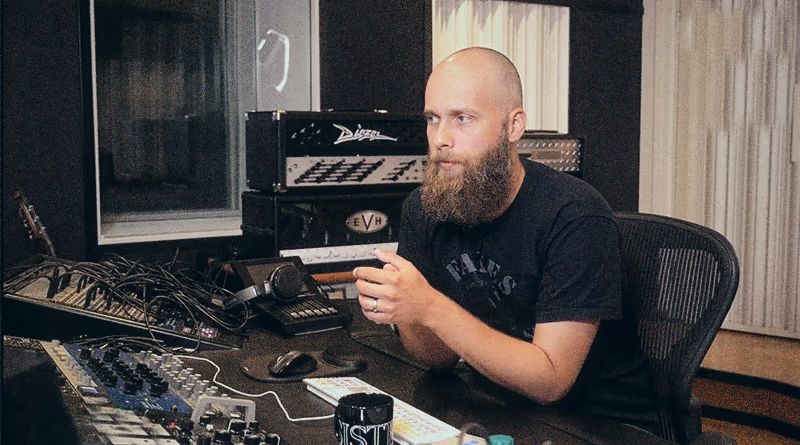
When Was Auto-Tune Invented? A Metal Producer’s Deep Dive
Nail The Mix Staff
Alright, let's talk about a piece of software that’s probably launched a thousand forum arguments: Auto-Tune. Love it, hate it, or secretly use it on everything, it’s undeniably a massive part of modern music production. But amidst all the chatter about its "sound" and whether it's "cheating," a more basic question often gets lost: when was Auto-Tune invented, anyway? And more importantly for us metalheads, how did it go from T-Pain to terrorizing breakdowns?
If you’re mixing heavy music, understanding your tools is paramount. Auto-Tune, and pitch correction in general, is one of those tools that can be a lifesaver or a sonic crutch depending on how you wield it. So, let’s get into it.
The Big Reveal: So, When Did This Thing Actually Drop?
The magic box (or rather, plugin) known as Auto-Tune was officially unleashed upon the world by Antares Audio Technologies in early 1997. The brains behind it? A geophysicist named Dr. Andy Hildebrand.
Yeah, you read that right. Dr. Hildebrand was working with reflection seismology, using sound waves to map underground areas for oil companies. He developed complex algorithms to interpret sonic data. Turns out, the math involved in figuring out if there’s oil under the ocean floor isn’t a million miles away from figuring out if a vocalist is hitting the right note. A colleague jokingly suggested he should make something to keep her in tune, and a lightbulb went off. Thus, Auto-Tune was born. Wild, huh?
From "Believe" to Breakdowns: How Auto-Tune Conquered Music
While Auto-Tune hit the scene in '97, it was Cher’s 1998 mega-hit "Believe" that really blasted its sound into the public consciousness. That super obvious, warbling, robotic vocal effect was initially a studio secret, with producers even claiming it was a vocoder to throw people off the scent. But the cat was out of the bag, and the "Auto-Tune effect" became the sound of late 90s/early 2000s pop and R&B.
For a while, metal mostly steered clear, or at least, kept its use on the down-low. The genre prided itself on raw power and authenticity. But as plugin technology became more accessible and versatile, metal producers started realizing its potential beyond just making singers sound like Cher.
How Metal Producers Wield Auto-Tune (It's Not Just for "Fixing It In The Mix")
Forget the idea that Auto-Tune is just for pop stars who can't sing. In metal, it’s a versatile tool for enhancing performances, adding creative effects, and ensuring your vocals cut through a dense wall of guitars and drums.
H3: Subtle Pitch Correction: The Unsung Hero of Tight Vocals
This is where Auto-Tune shines for many metal producers. We're not talking about transforming a vocal into a robot; we're talking about taking a great performance and making it flawless. Even the best vocalists can have moments where a note is a hair flat or sharp, especially during aggressive screaming or long, sustained cleans.
-
Key Plugins:
- Antares Auto-Tune Pro (or Artist/Access): The OG. Its various iterations offer different levels of control. Auto-Tune Pro’s Graph Mode is killer for surgical edits.
- Celemony Melodyne: The king of transparent pitch correction and vocal editing. Its DNA (Direct Note Access) technology even lets you tackle polyphonic material, though for vocals, its melodic algorithm is what you'll be using.
- Waves Tune Real-Time: Great for, well, real-time correction during tracking or for a quick fix in the mix.
- DAW Stock Plugins: Logic Pro X has Pitch Correction and Flex Pitch, Cubase has VariAudio, Pro Tools has Elastic Pitch. Don't sleep on these; they can be surprisingly powerful.
-
H4: Settings for Natural-Sounding Correction
- Input Type: CRUCIAL. Set this correctly (e.g., "Low Male," "Alto/Tenor," "Soprano," or "Instrument" if you're experimenting). It helps the plugin track the pitch accurately.
- Key and Scale: Tell the plugin what notes are "allowed." This prevents it from pulling a note to the wrong chromatic step.
- Retune Speed: This is the big one. For subtle correction, you want slower speeds.
- In Antares Auto-Tune, try starting around 20-50. A speed of 0 gives you the hard, robotic effect.
- In Waves Tune Real-Time, the "Speed" and "Note Transition" knobs work similarly. Slower settings are more natural.
- Humanize (Antares): If you're using faster retune speeds but want to keep some natural variation on sustained notes, the Humanize function can help.
- Flex-Tune (Antares): This allows for more pitch variation within a note before correction kicks in, preserving more of the natural vocal performance, especially vibrato.
- Graphical Editing (Melodyne, Auto-Tune Pro Graph Mode): For the most transparent results, manually editing notes in a graphical interface is often the way to go. You can adjust pitch drift, vibrato, and timing with incredible precision.
H3: The "Hard Tune" Effect in Metal: More Common Than You Think
While subtle correction is a workhorse, the extreme, robotic "T-Pain effect" has definitely found its place in certain metal subgenres. Think modern metalcore, electronicore, and even some deathcore bands who use it for creative layering or to give clean vocal hooks an otherworldly, synthetic vibe.
-
H4: Dialing in That Aggressive, Processed Sound
- Retune Speed to Zero (or near zero): This is the hallmark. It makes the pitch jump instantly from note to note.
- Minimize or Disable Vibrato Controls: You generally don't want natural vibrato interfering with the hard-tuned effect. Some plugins have explicit vibrato controls you can adjust or bypass.
- Experiment with Formant Shifting: Some Auto-Tune plugins (like Auto-Tune Pro's "Throat" modeling or Little AlterBoy by Soundtoys) allow formant shifting, which can create really cool, unnatural vocal timbres when combined with hard tuning.
- Layering: Try blending a hard-tuned vocal subtly underneath a more natural lead vocal for added thickness and a modern sheen, or go full-on effect for specific sections.
H3: Auto-Tune on Instruments? Why Not?
While vocals are the primary target, don't be afraid to experiment.
- Bass Guitar: Can tighten up a slightly wandering bassline, especially on fretless or if the player’s intonation isn’t perfect. Use with caution, as it can sound artificial quickly.
- Synth Leads/Pads: If you've got a monophonic synth line that needs to be perfectly in tune or have that stepped-pitch effect, Auto-Tune can do the trick.
- Creative Sound Design: Slap it on a guitar solo with extreme settings for a bizarre, glitchy effect. Probably not your main tone, but could be cool for an intro or a weird bridge section.
Integrating Auto-Tune Into Your Metal Mix Workflow
H3: Plugin Chain Order: Get It Right
Generally, you want pitch correction early in your vocal chain.
- Pitch Correction (Auto-Tune, Melodyne, etc.): Give it the cleanest signal possible to track accurately.
- Subtractive EQ: Clean up any resonances or mud before compression.
- Compression: Control dynamics.
- Additive EQ/Effects (Reverb, Delay): Shape tone and add space.
After your vocals are perfectly pitched with Auto-Tune, you’ll likely want to carve out their space in the mix. For those surgical cuts and broad tonal shaping, a solid understanding of EQ is essential. If you're looking to really get under the hood of equalization, our EQ hub page: Carve Your Core: EQ Strategies for Mixing Modern Metal is packed with insights.
And once that vocal is tuned and EQ’d, making it sit powerfully yet clearly against a wall of distorted guitars and thundering drums often comes down to smart compression. To go beyond just making things louder and truly master vocal dynamics, check out our Compression hub page: Metal Compression Secrets: Beyond Just Making It Loud.
H3: Automation: Your Best Friend for Dynamic Correction
Don't just set and forget Auto-Tune.
- Automate Retune Speed: Use a slower speed for most of a phrase, then automate it to be faster for a specific note that needs more aggressive correction, or vice-versa.
- Bypass Automation: Turn the plugin off entirely for sections where it's not needed or where you want a completely raw sound (like an aggressive scream that thrives on pitch instability).
- Graphical Mode Edits: This is inherently a manual process, giving you ultimate control note by note.

100+ Insanely Detailed Mixing Tutorials
We leave absolutely nothing out, showing you every single step
H3: Your Ears Are Still the Ultimate Tool
Auto-Tune is powerful, but it's not a magic bullet. A truly awful vocal performance will still sound like an awful, albeit in-tune, vocal performance. Focus on getting the best possible recording at the source. Use pitch correction to enhance, not to perform miracles. Train your ears to hear subtle pitch inaccuracies so you know when and how much to correct.
The NTM Edge: See How Pro Mixers Really Use These Tools
So, Auto-Tune hit the scene in 1997, thanks to a geophysicist, and has since become a staple in everything from pop to punishing metal. Understanding its parameters and common uses is a great start. But imagine watching a seasoned metal producer like Joey Sturgis, Eyal Levi, or guests like Jens Bogren and Will Putney actually use Auto-Tune (or Melodyne, or Waves Tune) on real session files from bands you love.
That's what Nail The Mix is all about. You get the multitracks, and you watch the pros build a mix from scratch, explaining every plugin choice, every fader move, every creative decision – including how they approach vocal tuning in the context of a full, crushing metal mix. It’s one thing to read about Retune Speed; it’s another to see it dialed in perfectly to make a vocal soar.
If you're ready to stop guessing and start learning the techniques that make pro metal mixes sound so massive, polished, and powerful, then it's time to Unlock Your Sound: Mixing Modern Metal Beyond Presets.
The Final Word on Auto-Tune
So there you have it. Auto-Tune wasn't cooked up in a pop lab; it emerged from the world of seismic data processing in 1997. Since then, it’s become an indispensable (and sometimes controversial) tool for producers across all genres, including us metalheads. Whether you're aiming for transparent pitch perfection or a full-blown robotic assault, understanding how to use it effectively can seriously elevate your mixes. Now go fire up your DAW and experiment!
Get a new set of multi-tracks every month from a world-class artist, a livestream with the producer who mixed it, 100+ tutorials, our exclusive plugins and more
Get Started for $1


